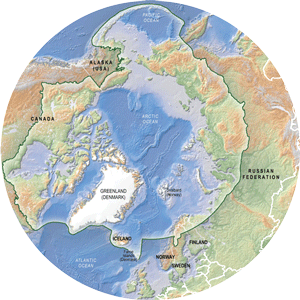Decide what to Monitor?

The CBMP Monitoring Plans identify key elements for each ecosystems, known as Focal Ecosystem Components (FECs) where changes in FEC status likely indicates changes in the overall environment and therefore should be monitored. The FEC Search Tool allows the user to search through the FECs defined including their attributes and parametres in the Freshwater and Terrestrial Monitoring Plans and to select those relevant for their field station/monitoring programme. The results can then be downloaded by the user in an excel sheet.
- FEC Search Tool: Freshwater biodiversity
- FEC Search Tool: Terrestrial biodiversity
The CBMP Monitoring Plans identify some Basic (easy to use and/or very cost-effective), Medium (requires more effort or capacity), and Advanced (requiring some specialized equipment, expertise or more effort) alternatives for sampling methods to accommodate diversity in expertise and capacity. In general, researchers only need to select one of the approaches that is most useful for their program when more than one alternative method is suggested. We recommend selecting the FEC(s) and protocol that may provide data of higher quality if capacity exists.
Opportunities to integrate CBMP site design with Traditional Knowledge, community-based programs and citizen science initiatives are highlighted in the monitoring plans. These monitoring efforts have the potential to greatly contribute to the integrated approach. We encourage researchers to engage communities in monitoring where possible.
In order to keep the baseline created by the Arctic Biodiversity Assessment(ABA) up-to-date CAFF through the Circumpolar Biodiversity Monitoring Programme (CBMP) is implementing a series of ecosystem-based monitoring plans representing agreements across Arctic states to compile, harmonize and compare results from Arctic biodiversity and ecosystem monitoring efforts.
Responding to ABA recommendation #13 on the need to fill gaps in our knowledge and detect trends the first outcomes from implementation of these plans are a series of State of Arctic Biodiversity reports built around synthesis and assessment of data on FECs. The State of the Arctic Freshwater Report (SAFBR) was released in 2019 and the State of the Arctic Terrestrial Report (START) is scheduled for release in 2020.
Conceptual models as part of the monitoring design
Deciding what to monitor is crucial when determining what management and science questions your programme would be able to answer. As a parallel to this, conceptual ecosystem models should be designed based on guidance from the CBMP Freshwater and Terrestrial monitoring Plans. Based upon this, your final decision on the FEC´s to be monitored can be taken.
The CBMP integrated monitoring approach needs to reach across programs, jurisdictions, stakeholders and agencies to manage for ecosystem sustainability. A conceptual model represents a working hypothesis about key system relationships, functions and organization. Developing a monitoring program based on a structured and well-thought-out ecosystem-based conceptual model approach can generate a comprehensive, system-based understanding that provides the foundation to identify and assess a suite of key FECs and related attributes, and priority ecosystem structures, functions, and processes as well as their linkages to abiotic and biotic drivers.
Conceptual ecological models for the Arctic, based on science and other expert input, are tools that can provide a “common language” to elucidate and communicate the critical components, processes and drivers of ecosystem sustainability within and across resource disciplines. The conceptual models that are relevant at an Arctic field station should allow for the identification and selection of priority monitoring elements that will meaningfully describe the status of many parts of the ecosystem and the likely cause of change with the least effort possible. This is especially critical when monitoring remote, difficult to access Arctic locations and field stations, where a program cannot monitor everything, everywhere, and all of the time. Once established and fully vetted, the conceptual models provide a basis for resource-use decisions predicated on maintaining or restoring ecosystem capacities through monitoring FECs, functions, processes, and their associated attributes and parameters.
Understanding linkages between the biotic and abiotic drivers of the system and the potential FEC attributes is critical to development of a successful, efficient monitoring program. Differential driver impacts, or strength of impacts, have direct relevance on what, where and how often to monitor. Understanding what biodiversity components are likely to be affected by a given drivers(s), may prioritize the component or driver(s) for monitoring. Understanding where priority components exist, or which potential sampling strata are likely to be influenced first, or most heavily, by any given driver(s), may prioritize the sampling design. Similarly, understanding that any driver may influence a component or location first or more heavily than others, may prioritize the component for more frequent monitoring compared to other components that are likely to change more slowly through time. For these reasons it is important to identify drivers in the development of the conceptual model. Methods, steps and lessons learned for a field stations to consider, to develop a relevant and CBMP conceptualized conceptual model can be found in the online User Manual (note this tool is under development and subject to change).








